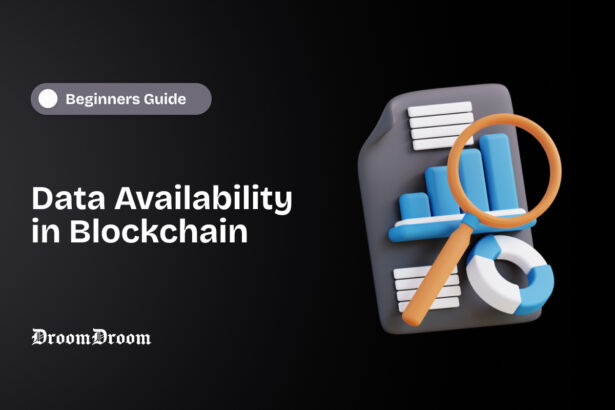Data availability in blockchain technology is an integral concept that ensures all the network participants can access and verify the data stored in the blockchain. With the growing network, more transactions are fed into the blockchain making complex data sets.
Managing these big data without affecting decentralization is often challenging. Public blockchains like Ethereum have a distributed ledger where the data are available to everyone in the network. If data is not available for nodes in the network, validators won’t be able to verify the truthfulness of transactions.
Data availability in Web3 is defined as the ability of a network to guarantee that all network participants have access to the data needed to verify a block. Data availability is critical in maintaining blockchain security, decentralization, and, scalability.
This article covers the concept of data availability in blockchain, why it is important in the blockchain network and its challenges.
What is Data Availability in Blockchain
Data availability in blockchain makes sure that all network participants have the same data required to verify transactions on the blockchain. The data stored in the blockchain contains transaction details, block information, and the state of the ledger.
Benefits of Data Availability
- Brings transparency and trust among users by allowing all the nodes in the network to fully validate newly added transactions and blocks.
- It avoids the risk of malicious actors adding invalid transactions onto the blockchain maintaining the integrity of the system.
- Improves the overall performance of blockchain networks in scalability, security, and decentralization.
Data availability is essential for maintaining the trust and integrity of the network. Without data availability, it is difficult for validators to verify the accuracy of transactions and the security of the entire system could be compromised.
Why Data Availability Matters in Blockchain?
Have you heard about blockchain trilemma? Blockchain cannot attain all these three features simultaneously- security, scalability, and decentralization. Let us understand how data availability helps blockchain to function effectively.
Security
Data availability provides data to all validators and network participants required to verify transactions. This avoids adding invalid transactions to the blockchain. If the complete data are not available, the validators are not able to validate and ensure the accuracy of transactions, negatively affecting the trust in blockchain technology.
Scalability
Blockchain networks are trustless which means no need for the users to trust a central authority to process transactions. This is achieved through the decentralized distributed storage of data in an immutable ledger. The entire copy of data is accessible to multiple nodes present in the network. The scalability trilemma arises due to the unexpected growth of network interaction where the nodes are unable to load and process that number of transactions effectively.
When blockchain transaction volume is increased, each node in the network is required to store and process the complete transaction history. Some nodes are not able to handle full replicas of blockchain data due to limited resources. This causes storage bloat and verification overhead. This can be addressed with data availability solutions improving overall performance. The better way to provide data to nodes can speed up the verification hence the transaction processing.
Understand scalability in blockchain and various blockchain scalability solutions in this comprehensive guide.
Decentralization
One of the core characteristics of blockchain is decentralization. The control over the blockchain is distributed among multiple entities. Every network participant has a complete copy of the information and no one can make changes to the data. If the data are too large and require too many resources to process transaction history, it becomes difficult for smaller nodes to participate in the network activities leading to centralization.
Data availability helps in achieving decentralization by enabling lightweight nodes to verify transactions without needing to store entire blockchain data.
Data Availability: Challenges and Solutions
Data withholding Attacks
A data withholding attack is one of the known data availability problems, that happens when transaction data for a newly proposed block cannot be downloaded or verified. This is because the block producer withholds the transaction data, making it unavailable for nodes to update the state. It imposes a threat in the security and integrity of the network.
Data Availability Sampling (DAS)
Data availability sampling is a technique used by blockchain for light nodes to verify data availability without the need to download all data for the block. DAS allows nodes to randomly sample small parts of blockchain data reducing the amount of data processed by each node. It works in three steps, segmentation, random sampling, and verification. DAS splits blockchain data into small segments or chunks, the nodes in the network randomly select and download some quantity of chunks and verify probabilistically the availability of entire chunks.
Do you know EigenLayer that allows users to restake ETH and also supports data availability for Mantle rollups using EigenDA? Learn more about Eigen Layer here.
Conclusion
Data availability is the foundation of blockchain security, scalability, and decentralization. It is essential to address data availability to make sure the data is accessible to anyone in the network to verify the integrity of data. As the ecosystem grows, data availability and its challenges are taken into account to maintain trust in blockchain applications.




















